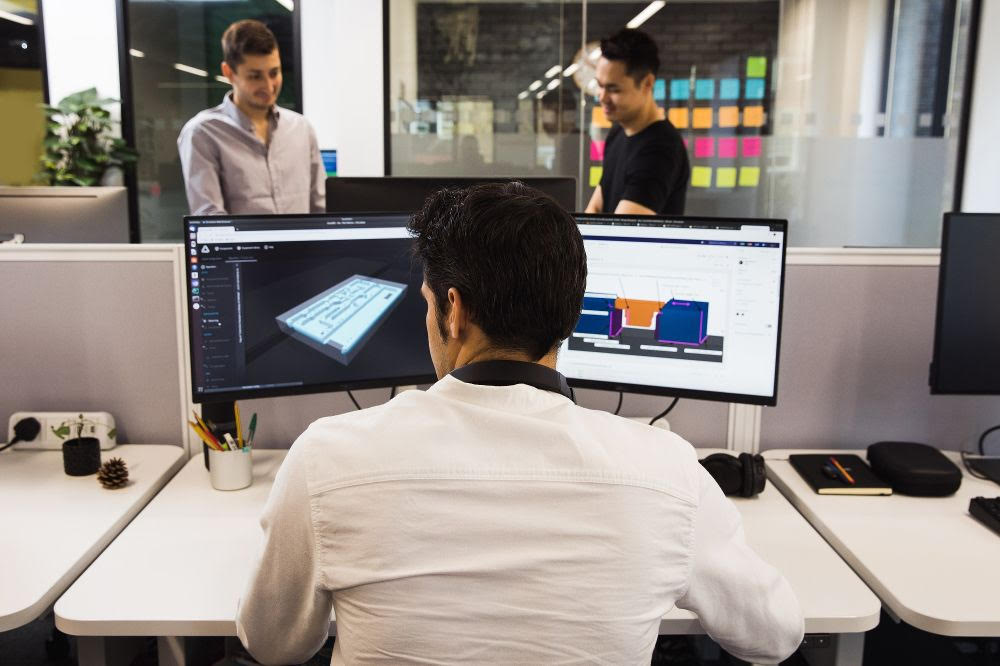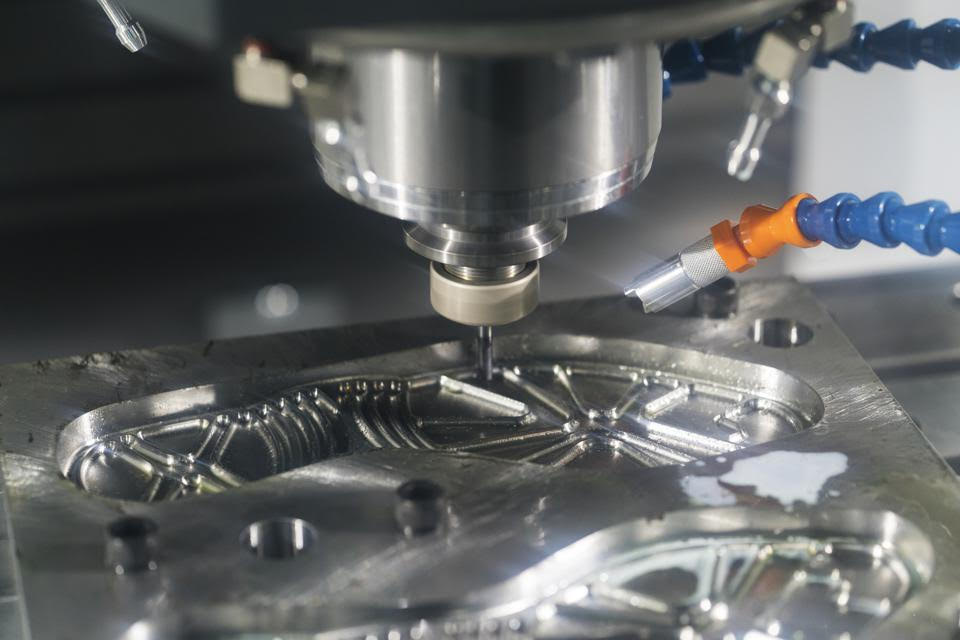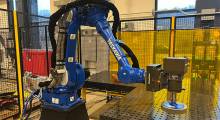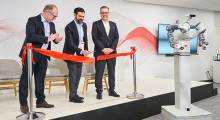Shortly before Christmas, we were both invited to participate in The Eric Miscoll Show, co-hosted by EMSNOW Publisher Eric Miscoll and Forbes and Entrepreneur writer Philip Stoten. The panel explored a future state of manufacturing where autonomous systems manage machines, factories, and even supply chains. This was the first time we had met, but we soon realized we had many ideas and ideals in common. Here are some highlights from that discussion and our vision of the future, as well as some of the challenges and barriers that sit between us and the future of autonomous manufacturing.
The pandemic has been an accelerant for change in the manufacturing world, and particularly for digital transformation, exposing weaknesses in the status quo. The use of collaborative tools, starting with Zoom, then shared documents, is teaching people to trust in the cloud and digital ecosystems. The disruption of the COVID-19 pandemic and the resulting hit to the economy have underscored the need for greater resilience and efficiency.
We all know that long supply chains sacrifice agility for price, and the pandemic showed us that many companies had pursued low costs to their detriment and risk of a lack of adaptability. Supply chain managers may be realizing that a more agile, faster supply chain will be better in the future.
On top of this, many are starting to question the globalization of manufacturing and constantly chasing low-cost labor, particularly when that means an overdependency or overexposure, to certain locations like China. Systems are needed that allow us to manufacture closer to design, closer to the consumers.
Although environments like the U.S. or Europe have higher labor costs, automation can benefit from stronger institutions and infrastructure, high-quality talent, and great innovation ecosystems. These countries and regions need manufacturing jobs and a sustainable manufacturing industry for a stronger and more balanced economic future. Many are talking about a renaissance of manufacturing in North America and Europe, with countries like the U.K., France, and Germany starting to stand out. This is reflected not just within manufacturing circles, but also within the corridors of power where policies are developed and incentives are created.
Meanwhile, over the past decade, we’ve started to see a democratization of innovation, similar to how YouTube and its peers democratized the production of content, creating an explosion of content providers. The shock of the pandemic, combined with the availability of digital manufacturing ecosystems, could help create a boom for innovation.
An autonomous future

The world of product innovation and fulfilment can be broadly divided into three processes: design a product, make or buy the parts, and then assemble those parts. CloudNC has chosen to start with CNC-manufactured parts because that industry is ripe for disruption. Although the machine is complex and sophisticated, the way it is managed and utilized is not, providing real opportunity to derive tangible performance improvements.
Launchpad operates in an adjacent world, assembling parts and connecting the whole ecosystem starting with DfM (Design for Manufacturing) on the fly, the automated development of work and build instructions, the procurement of parts and then the assembly using robotics where possible. Launchpad has also developed and built a flexible robotic manufacturing solution that learns in a simulation and doesn’t need expensive programming.
The ideal is like an Amazon warehouse—software is making all the decisions, but humans are working side by side with robots and autonomous systems. The mix of manual and automated labor will change and develop over the years as solutions change and develop. The future depends on the first stage, the current stage, working well.
Ingredient technologies enabling autonomy
Artificial intelligence is one of the key enabling ingredient technologies, but it is not the only one. In the past few years, machine learning, computer vision, and deep learning have enabled some amazing capabilities and tasks. However, AI often needs more data than is practical to collect. Launchpad’s key insight is that there is an alternative to real-world data collection, which is to learn inside a simulation. This requires sophisticated modeling and algorithms, but it is dramatically cheaper than collecting data from physical machines.
Meanwhile computing resources have become cheap, scalable, and accessible, thanks to the likes of Amazon Web Services. This availability of high-performance compute on-demand is hugely important to CloudNC. Autonomously managing factories, and programming and controlling CNC machines is a phenomenally complex computer science problem, which would be intractable without the power of the cloud.

Is this Industry 5.0?
Labels like “Industry 4.0” have little to no value; we’re probably barely past Industry 3.0. Industrial revolutions normally take around 100 years, deliver a multi-order-of-magnitude improvement in performance, and change the way we live. This was true of the first three, and we’re probably still in the “compute and digital” revolution, the third industrial revolution that started to change the way production occurs some decades ago. Manufacturing is really just catching up with e-commerce and logistics. The real fourth industrial revolution will be autonomy, not digitization.

Getting there requires will, cash, and time. There are numerous technical issues to solve, and we’re working on these right now, along with numerous other startups who see the potential, as well as early adopter OEMs that want to buy their technology differently.
And the money is following, with real investment starting to come into the manufacturing sector in recent years. We’ve seen investment funds that specifically focus on manufacturing technology and particularly on automation and autonomy. We’ve also seen some technology-focused funds investing hundreds of millions of dollars into startups that share the same vision of autonomous, adaptable robots.
We’re building a blueprint for the future of manufacturing, one that we believe will bring benefits to all the stakeholders, from the innovators through the brand and the manufacturing partners to the end user or consumer. And this can only benefit the rest of the world, as supply chains get shorter and sustainable manufacturing ecosystems and sustainable manufacturing jobs are created in both low- and high-cost geographies.
There is an end state, way beyond where we are now, and beyond even where we are going in the short term. It is what we call “exponential manufacturing,” where we can expect the supply chain and manufacturing ecosystem to expand and adapt to suit the needs of the market. That is a really exciting prospect. But in the meantime, we are creating something that really leverages the value of human and automated capital to deliver products efficiently and economically.
Article topics
Email Sign Up
















